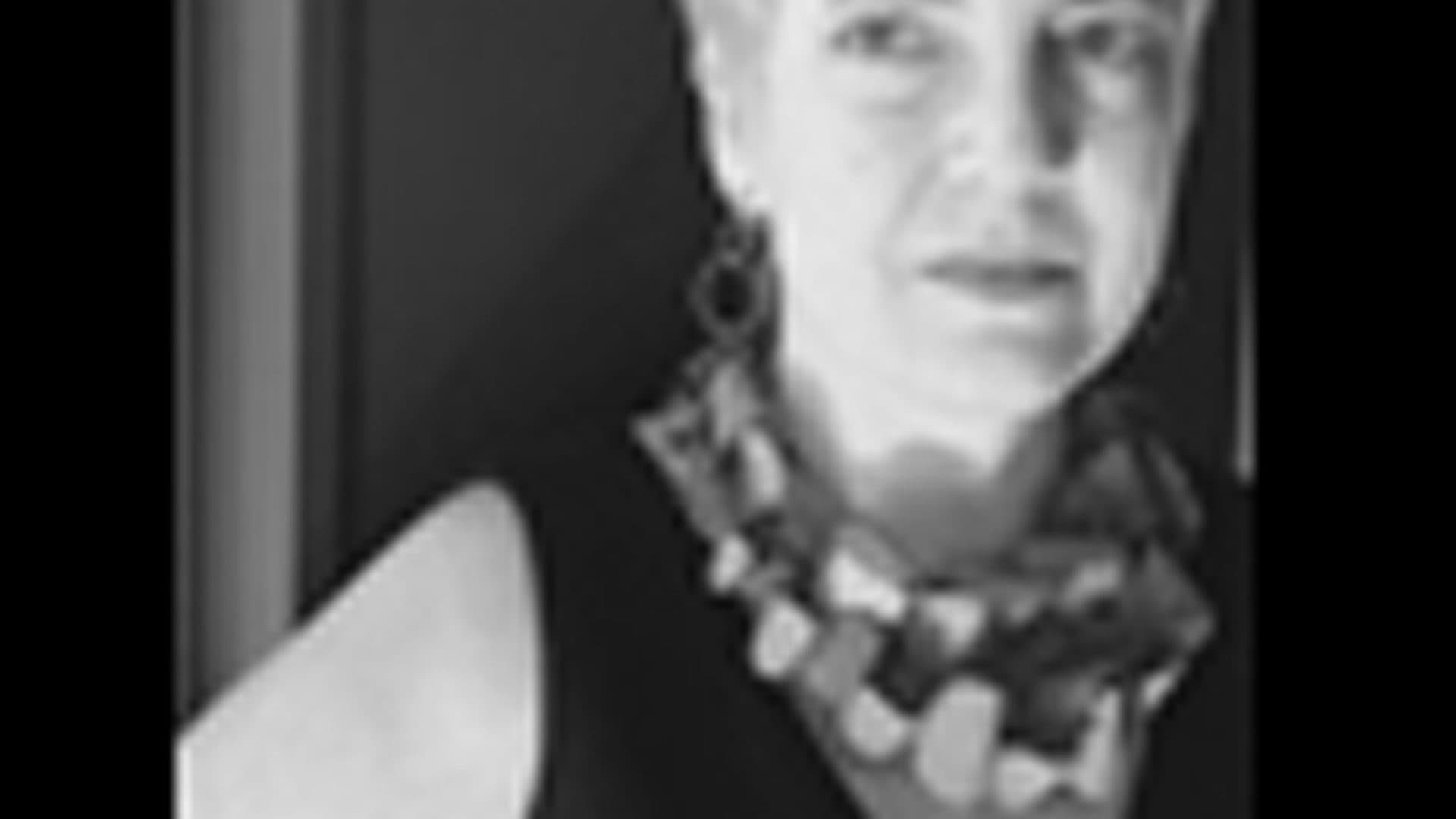
New York’s Aaron Faber Gallery invited 14 jewelers to select a muse and let it inspire a new body of work for their annual fall show. Three distinguished jewelers included in this exhibition—Glenda Arentzen, Janis Kerman, and Christy Klug—talk candidly with Art Jewelry Forum about their influences, their process, and their unique approach to Referencing the Muse.
Marthe Le Van: Please name and briefly describe your muse for the pieces in this exhibition.
Glenda Arentzen: Adda Husted-Andersen was a mentor rather than a muse. She was a Danish studio goldsmith who moved to New York City before World War II and eventually opened a store/studio on First Avenue, very near the United Nations. There, she designed and produced limited-edition jewelry, hollowware, and enameled pieces, as well as special orders and fine repairs for individual clients. In addition, she taught at the Craft Students League and was active in the American Craft Council and the Artist Craftsmen of New York, which included many European émigrés at that time. She exhibited internationally.
Janis Kerman: My muse for these pieces is Richard Caldicott, a British artist born in 1962 in Leicester, England, who lives and works in London. Since his graduation from the Royal College of Art in 1987, his work has been exhibited internationally in both solo and group exhibitions. Caldicott’s works reside in many significant public and private collections, including Kunstmuseum, Bonn; Sir Elton John Collection, UK; Elfering Collection, Miami; and Goss Michael Collection, Dallas/London.
Sir Elton John—who owns one of the largest photography collections in the world and who is an avid collector of Caldicott’s work—wrote, “Richard has the unique ability to transform the medium of photography, creating something new but still using the most traditional technique. Richard is one of those artists who elevates photography to an important and recognized form of contemporary expression.”
Christy Klug: Ellsworth Kelly has been a pioneer of abstraction since the 1940s. He is most known for his paintings, but he did a series of plant drawings throughout his life that informed his more abstract work and inspired and informed my work for this exhibit.
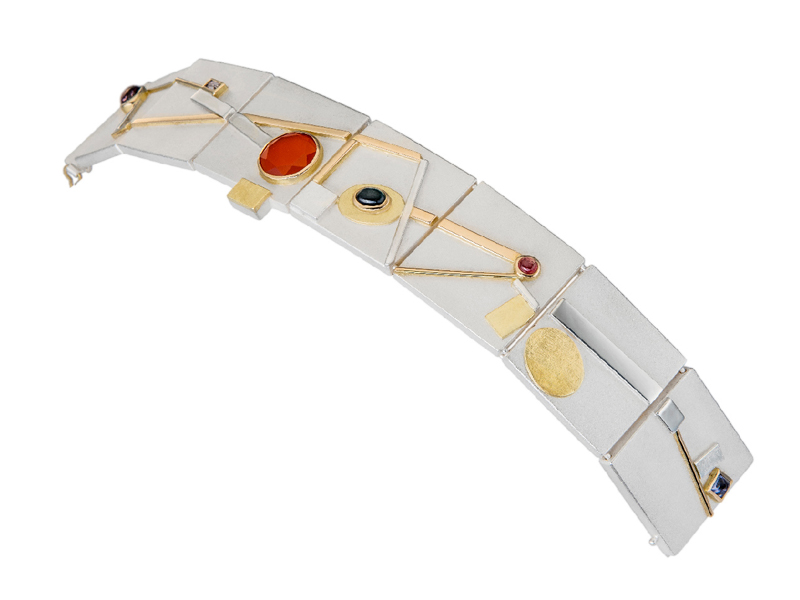
How did you feel inspired by your muse, and how is this inspiration incorporated into your jewelry?
Glenda Arentzen: She (Adda Husted-Andersen) gave form to my ambition to design, create, and market studio-made fine jewelry. After graduating from Skidmore College in 1962, I was her only full-time employee, learning to craft her designs, do errands in the jewelry district, and manage her store when she was teaching elsewhere. I was taught much and absorbed much more. Specific techniques, especially closings and connections in metal jewelry, are imbedded still. Time-saving techniques were absorbed. Observing the process of solving multifaceted problems up close was a unique bit of training that was not available in any other way at the time.
Today, I continue making most pieces for a one-of-a-kind collection as a studio goldsmith, engaged with individuals as well as galleries. I still enjoy the challenge of developing new textures and techniques to express my vision. My work does not look like Adda’s—her muse being Jean Dunand for whom she worked at one time in Paris and the Scandinavians of her native culture—but I would not have been able to be a studio goldsmith without having her example as a technician, an artist, and a problem solver. Every day she gave witness to the dignity of hand skills and the importance of visual communication through the site-specific art of body adornment.
Janis Kerman: I first found his (Richard Caldicott’s) work on Instagram and was immediately attracted to his graphic approach. It wasn’t hard to see how I could translate his aesthetic into pieces for this show. Geometry has always been the backbone of my work, and the linear pieces of Caldicott’s that I first saw spoke directly to that.
Christy Klug: Ellsworth Kelly’s drawings have an honesty, an intimacy, and a spontaneity about them. To me, these drawings are spare, timeless, and minimally organic. They embody the essence of what I have always tried to capture in my work.
The idea of the muse as a spiritual guide for creative artists dates back to classical mythology. Have you experienced a transcendent or otherworldly moment while making jewelry?
Glenda Arentzen: Periods of concentrated observing, the physical act of drawing, making jewelry, and skating are, for me, somewhat meditative processes. Through those acts I am often in a state which one might call “transcendent,” as it seems to be a fertile area for new ideas of all sorts.
Janis Kerman: I guess the only transcendent moment I could say I experience is when I am creating. Sometimes it starts off fluidly, other times not, but when the difficulty is taken over by a clarity that “appears” and takes over … that is when the fun begins. The muse in this particular case was the starting point, and it was an easy way to begin the process since there was such a large body of Caldicott’s work for inspiration.
Christy Klug: In the studio, I often get lost in the process of creating. I go to that completely present place where time passes without you noticing. I find that to be transcendent.
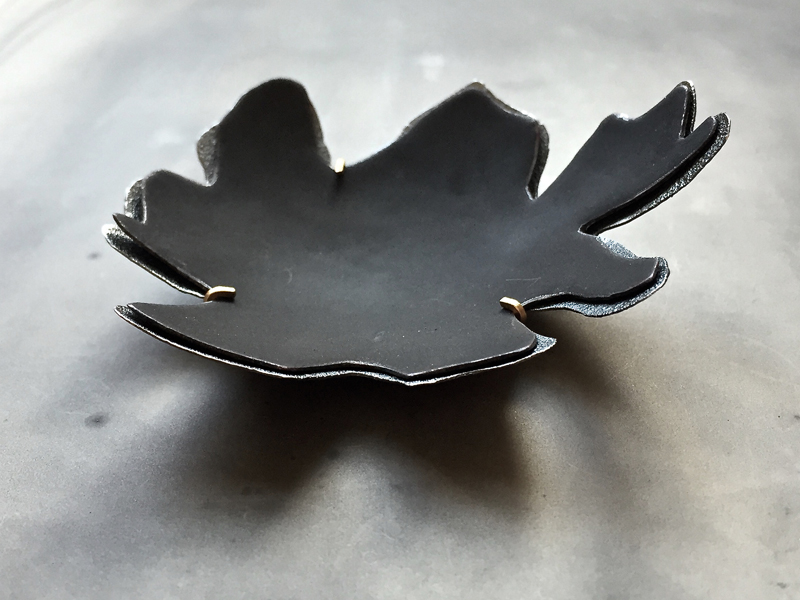
Once you selected a muse for inspiration, how did you work to maintain your connection to that creative spirit in your jewelry?
Janis Kerman: My connection was physical in that I printed out all of Caldicott’s works that spoke to me, either by their composition or color combinations. Once I had all that in front of me, the designs were easily composed.
Christy Klug: What inspired me the most in Ellsworth Kelly’s plant drawings was their simplicity, their minimal line, and their elegance. I tried to focus on those qualities as I created the silhouettes for my pieces. I kept coming back to these drawings to remind myself not to overdesign or overcomplicate the work.
You each selected a specific artist with a concrete visual vocabulary as your muse rather than a general topic, such as “nature.” Did this make your process more or less challenging?
Glenda Arentzen: Several works presented in this exhibition are part of an ongoing series coming from my interest in the intertidal zone of the Maine coast. These pieces are four pins—Tidal Pool, Sea Creature, Shore, plus a pin with no title using two pearls—and two untitled necklaces, one using a stone and bits of “floating” items, and the other referencing the continual flow of water as the textures encircle the neck.
This series is a work in progress. No form should be viewed as a metal translation of the rocks, water, flora, and fauna observed in the intertidal zone. Rather, they reflect my close observation of the interactions of the elements before me.
In all my work, I try to develop fresh forms to strengthen the work. Whether observing people, nature, man-made objects, or situations, I seem to see multiple aspects of equal interest. Sometimes these include conflicting elements. Often, there is a disparate element that gives deep meaning to the view … or just a good laugh. Understanding what is going on and finding the right visual vocabulary to express that is an unending challenge and delight.
Janis Kerman: This actually made the process so much easier as I had a plethora of concrete visuals to choose from and work with.
Christy Klug: The elements that drew me to Ellsworth Kelly’s plant drawings are the elements that I strive to embody in my work, so there was an ease and familiarity in following his lead. Studying his work helped me to maintain discipline and focus in the pieces I created.
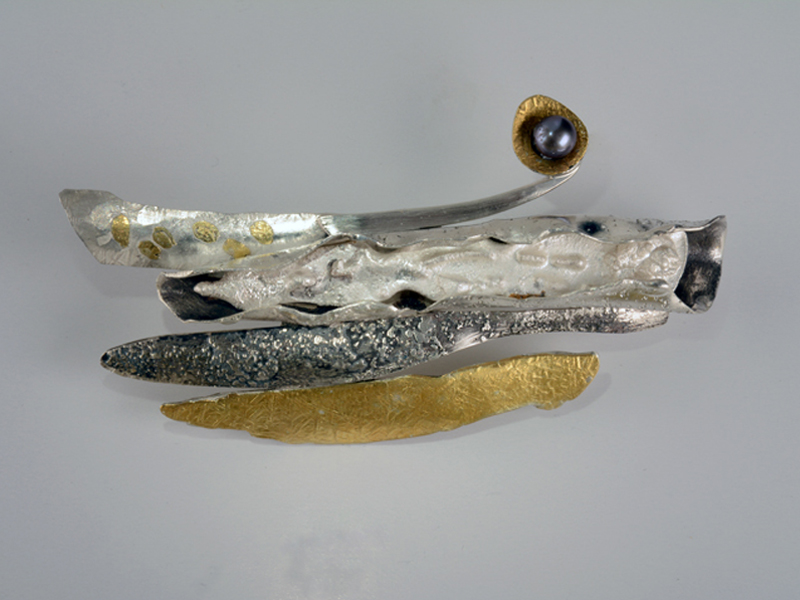
Can you imagine yourself being someone’s muse?
Glenda Arentzen: In the 70s, there were certain people who claimed they were encouraged to continue in the craft field by my example in being able to live as a craftsperson. However, I really do think that one has so many influences on their actions in life that having a single muse for one’s work is rare.
Janis Kerman: No, not really. I haven’t really given that too much thought before now.
Christy Klug: I have never thought about the personal role of muse. I feel it is something that must be earned and would require a great deal of artistic integrity. It would be the ultimate compliment.
Do you feel a connection to both the fine jewelry and art jewelry worlds? If so, how do you navigate between the two?
Glenda Arentzen: Yes. It is all body ornament, and I would like to include “ethnic” jewelry and costume jewelry. Besides creating pieces for people who first choose the jewelry to wear and then choose what garment will be appropriate with it, I truly enjoy creating decorative works that enhance the recipient’s presentation. Beyond my own work, I find it an interesting exercise to solve the puzzle of the “what” and “why” and “how” of any piece of jewelry. I have had wonderful experiences working on projects in both the fine jewelry arena and also the art jewelry arena, while retaining my point of view about the site-specific art that is jewelry.
Janis Kerman: I guess since my career has spanned so many years and so many different eras, I would say that I have navigated both those worlds effortlessly. In the early years, it was all about getting the skill set and experimenting with techniques and materials and solidifying both. Then, as opportunities came up, I would work with fashion accessory jewelry, production/limited-series jewelry, and more recently focusing on fine/art jewelry. I can design and make a diamond eternity band, but wonder why (and challenge) a client would be coming to me for something they could most likely find at a cheaper price on the market. They come to me for my “touch,” my vision, and interpretation, and that is where I do combine the fine jewelry world with the art jewelry aesthetic. I love that about what I do and have done for all the years of my career.
Christy Klug: I do feel a connection to both the fine and art jewelry worlds. If we define fine jewelry as more commercial and art jewelry as more conceptual, I think finding a balance between the two is essential in sustaining a self-supporting business. As an artist, I want to create work that pushes me to be innovative, and as a business owner, it is also necessary to find a way to make a living as a maker. I enjoy the process of making in any capacity, and making a pretty piece of jewelry that is wearable and desirable is as satisfying as making a piece that pushes boundaries.

Who is currently making work that interests you and why?
Janis Kerman: Sophie Hughes, Sarah Loertscher, Todd Pownell, Isabella Lee, Amy Renshaw, Sophie Divett, Nicoletta Passarelli, Khushboo, Kristin Elizabeth Barbaree, Julie Cohn, Vanessa Gade … these are a few people I follow on Instagram. They are from all over the world, and I find that what they make makes me STOP and look. A few years ago, my list would have included many different names, but I think the common denominator among all the artists I have listed is that there is something fresh and not derivative about their work. I have been doing this for so long that it is easy to see work that is just a variation on what has already been done. The challenge for all of us is to create work that keeps us inspired, and that at the same time excites our clientele to want to keep purchasing our work. This has been a goal of mine since I started. I have always asked myself the question, “Why would I want to buy another piece from me?” That challenges me to create new and different work all the time.
Christy Klug: John Iverson is always creating work I find compelling and inspiring. He is a technical master and has a spare aesthetic that doesn’t require showing off his technical mastery. He possesses that rare ability to make it all look easy.
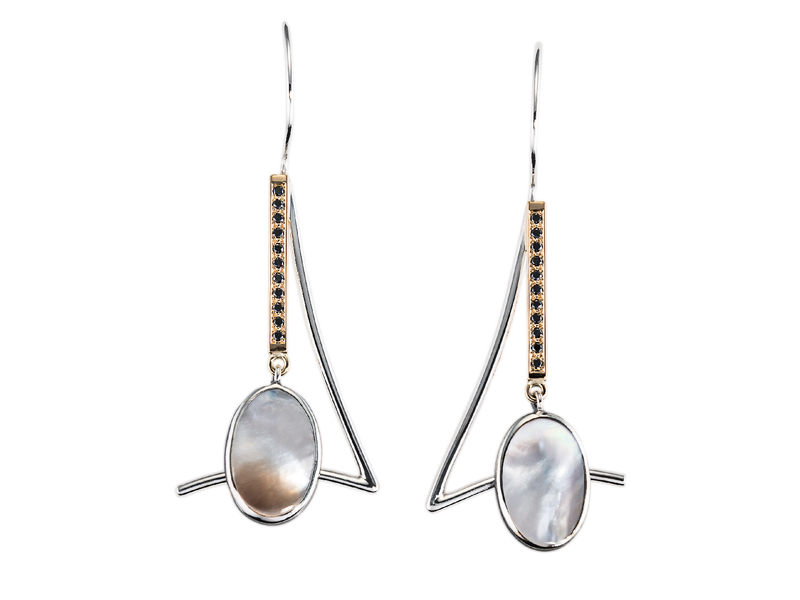
Have you recently experienced anything that filled your mind with wonder or your heart with joy? What was it?
Glenda Arentzen: Wonder: The exhibit Referencing the Muse, where the diversity of personal expression stimulated my thoughts on the human condition. Joy: Referencing the Muse, where I could look, touch, and try on the art. Keep in mind that most of our experience with art jewelry is with graphic images. Close contact with these compelling objects is a very special experience.
Janis Kerman: This past summer we were in Barcelona for the first time. The city was full of incredible art/architecture, but to see the Gaudí presence up close and to imagine how hard it was for him to create and stand by his convictions and succeed was awe inspiring. To visit the Sagrada Familia, still under construction … there are no words. When I see an artist’s work that is so powerful, I am humbled. As jewelers, I know that we make a product that no one NEEDS to survive, but if in any way we can contribute to making the end user/wearer’s experience a little bit more enhanced because of our vision and creation, then we have accomplished something.
Christy Klug: Minds filled with wonder and hearts filled with joy! That should be our everyday state of existence. Yes, I have experienced those things recently. I traveled to Antwerp, Belgium, last spring and visited the flagship store of another muse of mine—fashion designer Dries Van Noten. I admire his courage in maintaining control of his business and aesthetic. His clothes are perfection.
Thank you!
